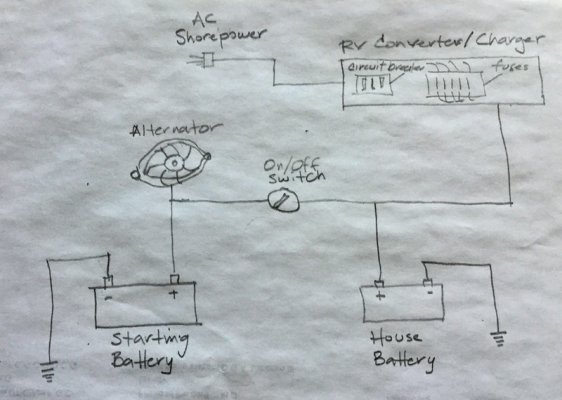lancefb
Member
Is it a problem to connect both my batteries together? The house battery is a hybrid deep cell type while the starting battery is typical for that purpose. I don't have solar yet, so while dry camping, running down the house battery, I could recharge it by connecting it to the alternator. I was thinking of using a simple on/off switch to separate them as per my diagram. I would only turn on the connection when I needed a charge from the alternator, otherwise would be off.

